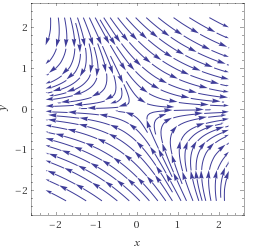Eigenvalue/Eigenvector Definition
Linear Algebra for Data Science in R

Eric Eager
Data Scientist at Pro Football Focus
Definition
For a matrix $A$, the scalar $\lambda$ is an eigenvalue of $A$, with associated eigenvector $\vec{v} \neq \vec{0}$ if the following equation is true: $$A\vec{v} = \lambda \vec{v}.$$
In other words:
The matrix multiplication $A\vec{v}$, a matrix-vector operation, produces the same vector as $\lambda \vec{v}$ a scalar multiplication acting on a vector.
This matrix does not have to be like the matrices in the last lecture.
Example
print(A)
[,1] [,2]
[1,] 2 3
[2,] 0 1
Notice that $\lambda = 2$ is an eigenvalue of $A$ with eigenvector $\vec{v} = (1, 0)^T$:
A%*%c(1,0)
[,1]
[1,] 2
[2,] 0
2*c(1, 0)
2 0
Geometric Motivation

Example, cont'd
Notice that $\lambda = 2$ is an eigenvalue of $A$ with eigenvector $\vec{v} = (1, 0)^T$ and $\vec{v} = (4, 0)^T$:
A%*%c(1,0)
[,1]
[1,] 2
[2,] 0
2*c(1, 0)
2 0
A%*%c(4,0)
[,1]
[1,] 8
[2,] 0
2*c(4, 0)
8 0
Let's practice!
Linear Algebra for Data Science in R

